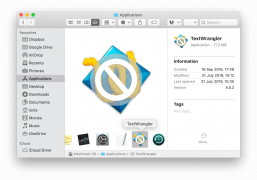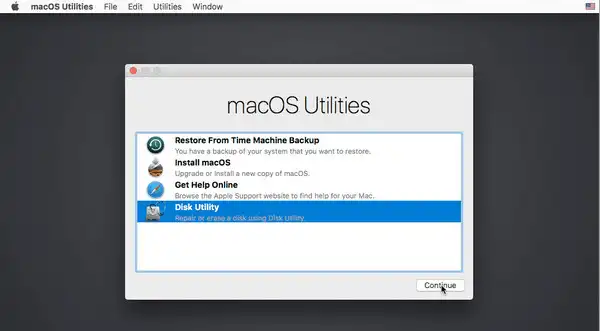- Upgrade Unsupported Mac To Catalina Operating System
- How To Install Catalina On Unsupported Mac
- How To Get Catalina On Unsupported Mac
- Upgrade Unsupported Mac To Catalina Download
- Jan 25, 2019 All of the new and old Mac users will experience the new operating system update that will be widely accessible through the App Store and software update. This software update will provide the opportunity to install the macOS Catalina with all the superb features on their Macs.
- How to keep older Macs secure: a geeky approach (run Catalina on unsupported Macs) Posted on October 8th, 2019 by Jay Vrijenhoek. Note: This article was originally written for macOS Mojave, and has been adapted for macOS Catalina. From a security standpoint, using the latest version of macOS—the Mac operating system—is always preferred.
Simply restart your Mac and immediately hold the CMD-R keys on reboot until you see the recovery OS. Step 5: disabling SIP. Run csrutil disable in the recovery Terminal accessible in the menu bar under Utilities. You will also be able to check the success of the command, back in Catalina (so, after a reboot), by running csrutil status (optional). B) Upgrade all three Macs to unsupported Mojave or C) Upgrade all three Macs to unsupported Catalina My main concern with upgrading to Mojave or Catalina is impaired performance and stability compared to High Sierra. Similarly with moving from HFS+ to APFS. However, I'm hoping to hear that my concerns are unfounded (or if not, that's OK too).

Helps you create a bootable USB drive for macOS Catalina which will work with older Macs, not officially supported by the operating system
But I would rather buy a second generation silicon mac to truly take advantage of the new OS features and remain on Catalina (or HS) for everything else. Or just bootcamp your old unsupported mac to windows 10 as the main OS and macOS as secondary to bring out some of its latent potential to 2021. I could not get it to properly install on imac 9,1. Mac OS X Server 1.0 is a operating system developed by Apple Computer.Released on March 16, 1999, it was the first version of Mac OS X Server. It was Apple's first commercial product to be derived from 'Rhapsody'—an eventual replacement for the classic Mac OS derived from NeXTSTEP's architecture (acquired in 1997 as part of Apple's purchase of NeXT) and BSD-like Mach kernel.
What's new in macOS Catalina Patcher 1.4.4:
- Fixed compatibility with Catalina version 10.15.5
macOS Catalina Patcher (formerly macOS Mojave Patcher, macOS High Sierra Patcher and macOS Sierra Patcher) is a small yet powerful tool that can help you create a bootable USB drive that can be used to install macOS Catalina on Mac computers older than mid 2012, basically acting as a macOS Mojave patch for unsupported Macs.
The tool extends the list of compatible hardware to the Mac Pro, iMac and MacBook Pro computers released in early 2008, Aluminum Unibody MacBooks or MacBooks Air manufactured in late 2008, or white MacBooks and Mac Minis produced in early 2009.
Get the macOS Catalina Installer app and make sure you have access to a compatible USB drive
To be able to use the app you must make sure that you have a USB drive that has at least 8 GB available, and that you have the macOS 10.15 Catalina installer app on your Mac.
Macos Catalina On Unsupported Macs
Note that you can download the macOS image from the Mac App Store application only on a machine that supports Catalina: otherwise, you must find an alternative solution.
For your convenience, macOS Catalina Patcher offers you the possibility to download the image through its interface: just navigate to the Tools menu.
At the same time, you must prepare the USB drive with the help of the built-in Disk Utility application: just format the disk using the Mac OS Extended (Journaled) standard.
Easy to configure patcher tool that can create bootable macOS Catalina USBs
Within the main window, you must simply load the macOS 10.15 image you want to use and select the target USB drive. The app will verify the image to make sure everything is OK, and all you have to do is press the Start Operation button.

You have the option to monitor the process in the macOS Catalina Patcher main window, and the utility lets you know when the task is complete.
Mac Os Catalina On Unsupported Mac
Worth mentioning is that after you install the OS by using the macOS Catalina Patcher bootable drive, you must launch the macOS Post Install utility to get access to patches specifically designed for your Mac’s model.
Make a bootable drive that allows you to install Catalina on unsupported Macs
Mac Os Catalina On Unsupported Macs Os
Bottom line, if your Mac has been manufactured before early 2008, chances are that you will not be able to install macOS Catalina on your computer.
All things considered, macOS Catalina Patcher is a small and user-friendly utility designed to help you bypass this limitation if your Mac is not in macOS Catalina's compatibility list, created to be used as an unsupported Mac Mojave patch.
Filed under
macOS Catalina Patcher was reviewed by Sergiu Gatlan- 64-bit processor
- 16 GB USB drive
- macOS Mojave Installer App
- Early-2008 or newer Mac Pro, iMac, or MacBook Pro
- Late-2008 or newer MacBook Air or Aluminum Unibody MacBook
- Early-2009 or newer Mac Mini or white MacBook
- Early-2008 or newer Xserve
macOS Catalina Patcher 1.4.4
add to watchlistsend us an updateInstall Macos Catalina On Unsupported Macs
- runs on:
- Mac OS X 10.6 or later (Intel only)
- file size:
- 223.4 MB
- filename:
- macOS Catalina Patcher.dmg
- main category:
- System Utilities
- developer:
- visit homepage
Mac Os Catalina On Unsupported Macs Drive
top alternatives FREE
top alternatives PAID
macOS Catalina is the most advanced version of the macOS which came in our hands on October 7, 2019. The introduction of Catalina happened in WWDC 2019. The public beta of macOS Catalina was out later on in July 2019. Apple introduced Catalina with fantastic features and amazing wallpapers by describing macOS Catalina, is a fantastic listener and she can understand you better than anyone. Catalina also has a Time-Shifting desktop which turns light into dark or dark into light according to your time zone. Here’s how to Install macOS Catalina on Unsupported Mac.
The profile picture of macOS Catalina is a lovely picture of Santa Catalina Island which changes depending on the time. The night time wallpaper is a picture of a navy blue ocean and dark blue sand mountain and the day time wallpaper is a beautiful picture of light yellow sand mountain which we can’t explain in words. The name of Catalina is taken from the Santa Catalina Island of Los Angeles. But according to some sources, it is taken from a girl’s name in Spanish and which means “Pure”.
macOS Catalina
Catalina’s complete version was down on October 7th, 2019. After Catalina was completely out, there were many new things and as well as many problems. I personally use macOS Catalina and I like it very much and have no problem with it except a little difficult to find things. However, there are lots of features and updates I haven’t still touched off.
With the help of Catalyst, you can use macOS and iPadOS simultaneously. Apple has made so many new updates and features which let us edit my photos and videos like a pro editor. Catalina is loved by so many people and people like to use macOS Catalina not only by Mac users but also by Windows and other operating system users. In this article, I’ll show how to Install macOS Catalina on unsupported Mac.
The latest updates happened in macOS Catalina march 24 2020. Due to this update changes came into Screen Time Communication Limits, a feature first brought to the iPhone in the iOS 13.3 update, it adds iCloud Folder Sharing, and it brings a new Head Pointer Accessibility option that allows the cursor to be controlled with head movements using Mac’s camera. We’ll see how to Install macOS Catalina on Unsupported Mac.
Check If Your Mac is in The Unsupported List
macOS Catalina is excellent but if users can’t use it, then it makes no sense to know it. From while ago, Apple has been cutting and making the compatible Macs list larger for their new versions and this list is also applied to Catalina. As Apple is rolling more versions they are cutting more old Macs from the list. The list of unsupported Mac is getting larger and is already too large. Maybe that’s because Apple wants more users to buy their new products instead of using their old ones.
Since the list of unsupported Macs has increased now some users who run Mojave also can’t install macOS Catalina. According to Apple, they said, we are decreasing the number of Mac supports because old Macs don’t have enough capacity and Metal graphics processors. According to Apple, they said, we are sorry for all the old mac users who can’t experience MacOS Catalina in their Mac. Not everyone can afford to get a new Mac every year and Macs aren’t cheap too. Don’t worry, we are going to show you how to install macOS Catalina on unsupported Macs.
Before heading towards installing macOS Catalina on your Mac, check out the unsupported list of Macs and if your Mac is from the unsupported list. Here are the list of unsupported Mac.
- Early-2008 or newer Mac Pro, iMac, or MacBook Pro:
- MacPro3,1
- MacPro4,1
- MacPro5,1
- iMac8,1
- iMac9,1
- iMac10,x
- iMac11,x (systems with AMD Radeon HD 5xxx and 6xxx series GPUs will be almost unusable when running Catalina.)
- iMac12,x (systems with AMD Radeon HD 5xxx and 6xxx series GPUs will be almost unusable when running Catalina.)
- MacBookPro4,1
- MacBookPro5,x
- MacBookPro6,x
- MacBookPro7,x
- MacBookPro8,x
- Late-2008 or newer MacBook Air or Aluminum Unibody MacBook:
- MacBookAir2,1
- MacBookAir3,x
- MacBookAir4,x
- MacBook5,1
- Early-2009 or newer Mac Mini or white MacBook:
- Macmini3,1
- Macmini4,1
- Macmini5,x (systems with AMD Radeon HD 6xxx series GPUs will be almost unusable when running Catalina.)
- MacBook5,2
- MacBook6,1
- MacBook7,1
- Early-2008 or newer Xserve:
- Xserve2,1
- Xserve3,1
If you’ve checked and found out your Mac is in the unsupported list, step to the next step which is how to install macOS Catalina on unsupported Mac.
What You’ll Need
Before you step ahead, here are what you’ll need for this procedure.
- A 16GB USB Drive
- Backup Mac
Once that’s with you, now dive into how to Install macOS Catalina on Unsupported Mac.
Backup Your Mac
Upgrade Unsupported Mac To Catalina Operating System
Before installing any operating system, its important to take backup of your computer completely. We recommend backing up your device. Because if anything goes wrong and you hadn’t backed up your device everything will be deleted but if you had backed up your device you can simply restore that. Here are the steps.
First if you want to backup, Time Machine Backup will help you do it without deleting any of your folders.
Connect an external hard disk or a USB with some space.
On the upper left corner of your screen, click on the Apple icon. Go to the dropdown menu and select System Preference.

By clicking on Time Machine you can make a machine which will back up your device.
Choose your backup and click on Backup.
With that done, we’ll start the process and how to Install macOS Catalina on Unsupported Mac.
How to Install macOS Catalina on Unsupported Mac
After checking your Mac, if your Mac is in the unsupported list, you can install macOS Catalina slightly without this tool and steps. If your Mac is unsupported follow the steps below.
Once the tool is there, open it. Click on Continue.
That done, if you’ve the macOS Catalina copy, select Browse for a copy. If you don’t select Download a copy.

macOS Installer App
On this window, click on Start Download.
After it’s completed, insert the USB and click on “Create a Bootable Installer”.
Installation Method
Let the process finish and once it’s done, take out the USB. After a few moments, insert the USB again then reboot the Mac.
When powering on hold the Option key for a while until the startup manager appears. After the Startup Manager opens click on the USB Drive with the help of arrow keys.
How To Install Catalina On Unsupported Mac
In this point, select Disk Utility and click on Continue.
If you have done the previous steps correctly, you are now in the Disk Utility window. To format your internal drive with APFS format, select the drive and click on Erase. When you’re done, close the window.

Erase Disk
Wait for the window and select Reinstall macOS to start the installation.
Click Continue with the simple installation wizard and on the install window, select the appropriate disk and click on Install. It might take some while. And you will see many commands going up and down.
Click on the Force Cache Rebuild option and click Restart.
Welcome
By this step, you will see macOS Catalina Setup running on your Mac.
After the installation process is done you need to shut down your Mac and insert the USB drive for booting your computer. we are doing this step to verify patches.
How To Get Catalina On Unsupported Mac
Now you are completely done with the settings and everything, we have installed the latest version of macOS booted on an unsupported device.
Upgrade Unsupported Mac To Catalina Download
The installation process might be difficult but it is not impossible and even if others say it is impossible we will make possible for you.